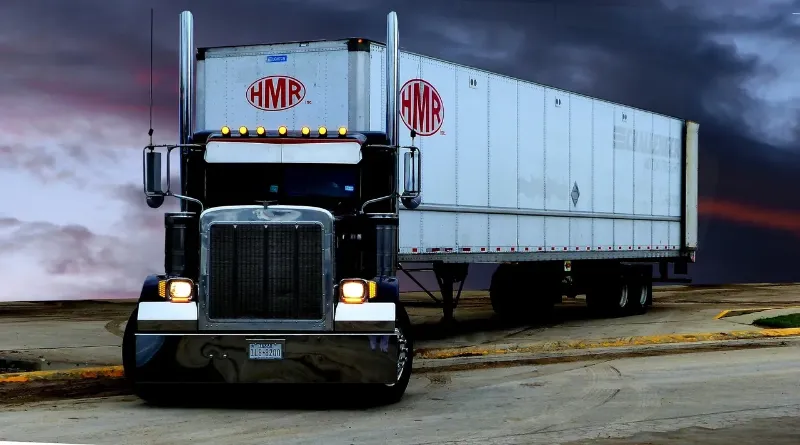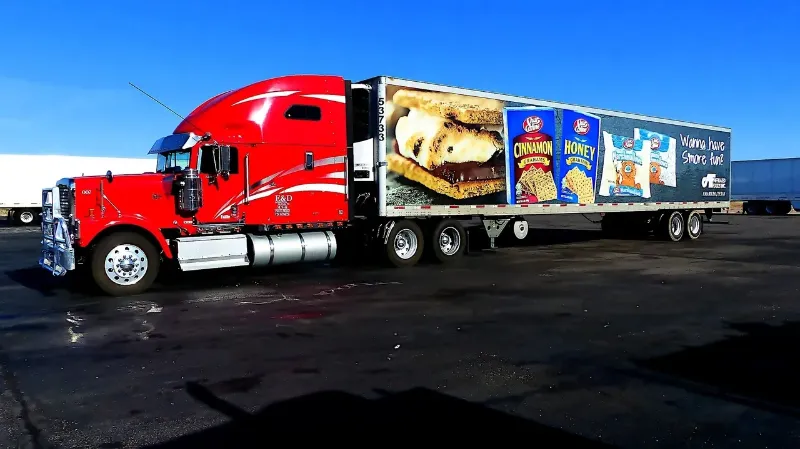Have you ever wondered why 18-wheelers can cause so much more damage, than a 4-wheeled vehicle, when in a wreck? Some of you may be thinking, duh…they are much bigger, which is one of the reasons, but there are also other challenges that drivers of tractor-trailers face, when navigating our roadways, that can lead to serious, deadly crashes. Weight, stopping distance, blind spots, and no or faulty safety measures are 4 factors that make 18-wheeler accidents so much more severe.
1. Size

The average tractor-trailer weighs 80,000 pounds; that is 40 tons. The average length of a tractor-trailer is around 80 feet. The average car weighs 4,000 pounds; that is 1/20th of the weight of a tractor-trailer. The average truck weighs between 5,000 and 7,000 pounds; that is between 1/16th and about 1/10ththe weight of a tractor-trailer. The average SUV weighs around 5,000 pounds; again, that is about 1/6th the weight of a tractor-trailer. As you can imagine, the more something weighs, the heavier the impact will be, if it collides with something. Since a tractor-trailer weighs up to 20 times more than the average car, on the roadway, it would be a safe statement to say that the impact could be 20 times worse. This is not the only factor that makes 18-wheelers so dangerous.
2. Stopping Distance

According to the Federal Motor Carrier Safety Administration (https://www.fmcsa.dot.gov/ourroads/long-stopping-distances), “a fully loaded truck, traveling in good road conditions, at highway speeds, needs a distance of nearly two football fields to stop.” Two football fields are equivalent to 600 feet. The average car, traveling in good road conditions, at highway speeds, needs between 120 to 140 feet to stop. As you can see, the tractor-trailer travels almost 3 times the distance, of an average vehicle, before it stops. Now, put together the increased weight, increased length, and increased stopping distance, and the picture becomes much clearer, as to why tractor-trailer wrecks are so much more dangerous. Also, the stopping distance estimate above, calls for good road conditions; that means, no rain, no ice, no oil slicks. When the road conditions are not good, then the stopping distance will be longer. Also, if the tractor-trailer driver is exceeding the speed limit, the stopping distance will be longer. Lastly, if the 18-wheeler driver is distracted or drowsy, his/her reaction time will be decreased, and again, the stopping distance will be longer. If a tractor-trailer driver does not have enough stopping distance, a crash is inevitable; the shorter the stopping distance available, the more severe the crash and injuries.
3. Blind Spots

According to Behind the Wheel Driving Academy, “Blind spots on a truck can occur up to 20 feet in front of the cab, on either side of the truck, and up to 200 feet behind the truck.” When you see the words “If you can’t see me, I can’t see you.” on the side mirror of an 18-wheeler cab, it is the truth. Avoiding these blind spots is a must. Since there are spots around the tractor-trailer, where the driver cannot see you, if the tractor-trailer driver must take any driving actions, into or out of these blind spots, a vehicle in those blind spots could get hit. Again, as we add items to the list of what makes an 18-wheeler so dangerous, you can see, the danger increases, with each new item. Here is a scenario to think about: the driver of a car changes lanes, into the front blind spot of a tractor-trailer driver. There is approximately 50 feet, in front of the tractor-trailer cab, that the driver cannot see; this is the front blind spot. That means that the driver of the car has taken away 550 of the necessary 600 feet, for the tractor-trailer to stop. That also means that there is a chance that the brakes will not even be applied, at all, as the driver of the tractor-trailer cannot see the car. So now, the car driver has taken away the necessary stopping distance and stolen the option for the tractor-trailer driver to brake. This leaves the car in front of an 80,000-pound tractor-trailer, with the inability of the tractor-trailer driver to even seeing the car, so he/she would not know that she needs to brake, and if the car driver tries to stop, a crash is inevitable; serious, possibly deadly, injuries are inevitable.
4. Inadequate Safety Measures

Thankfully, products attorneys, like Todd Tracy, have held trucking companies to the fire and forced them, through massive verdicts and settlements, to try to make 18-wheelers safer, for all roadway travelers. Sadly, some of these measures still are not enough. One of the first safety measures that 18-wheeler manufacturers added was the rear underride guard. Since this was one of the first safety measures, manufacturers have had years to make these better and more effective. Before rear underride guards were added, cars were going right under 18-wheelers, the top of the cars were sliced off and some of the people were decapitated. Earlier versions of these guards were ineffective, but as I said before, manufacturers have come a long way. There is not 100 percent protection, as side rear impacts are still provided minimal protection by the rear underride guard. Side underride guards still need major improvements. Ineffective side underride guards are still allowing for deadly injuries. Manufacturers are using cheaper materials, that are not protecting the cars and drivers that go under the body of the trailer; we see these types of injuries in side impact injuries, where an 18-wheeler driver ran a red light and the car t-boned the trailer. We are still seeing car tops ripped off and occupants dying.
5. What other drivers can do to help minimize 18-wheeler crashes

We, as drivers, also have to take extra precautions, when driving around tractor-trailers. We have to avoid their blind spots, if at all possible. When we change lanes, in front of a tractor-trailer, we must make sure to provide the tractor-trailer driver enough space to safely stop his vehicle; an ideal safe distance is 600 feet between your vehicle and the tractor-trailer. Also, when following tractor trailers, 50 feet following distance is a safe gauge, so that you can avoid running into the back of that trailer and potentially cutting the top of your car, or your head off. Be aware of the safety measures on the tractor-trailers around you. If you do not see side or undercarriage protective measures, do all you can to avoid traveling behind that tractor-trailer.
Tractor trailers provide a very important service, to our country. The drivers deliver a wide variety of items, that we need to survive. Truck driving is also a great source of employment for many men and women in our country. If we all work together, non-commercial and commercial drivers, we can take the necessary precautions to keep our roadways safe.
Stay safe!

